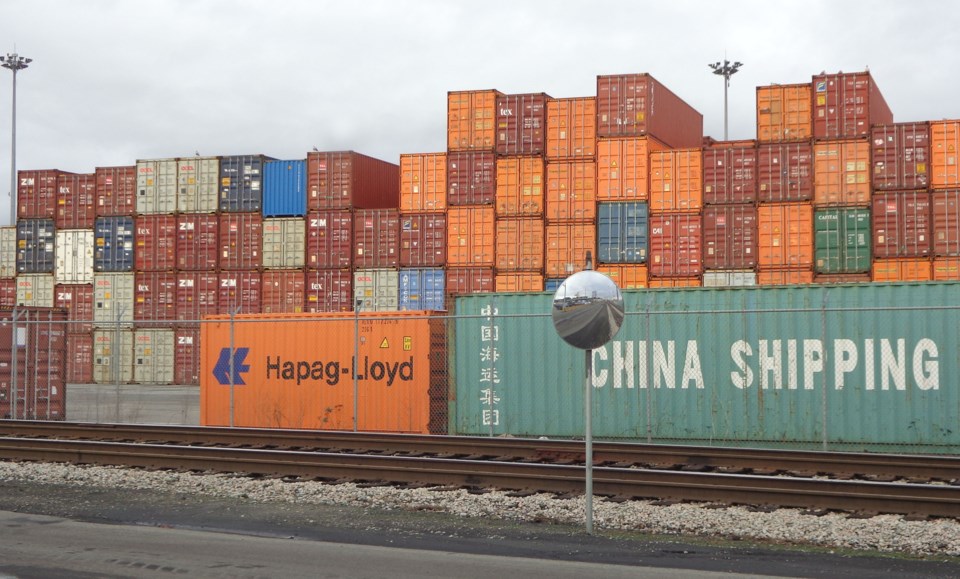The Vancouver Fraser Port Authority is anticipating a decision on its proposed Terminal 2 project by early next year.
That’s what president and CEO Robin Silvester told the Optimist in an interview this week following the release of the port authority’s 2021 mid-year statistics for goods movements through the port from Jan. 1 to June 30.
“We continue to be optimistic. We’ve had detailed information requests from the (federal environment) minister and we were on the cusp of answering all those questions. We continue to be strongly of the view that the project is approvable but that’s obviously a decision for the government to make. We’re hopeful that decision will be made early in the new year,” said Silvester.
The federal government has been considering the port’s application to build a new three-berth container facility that would be located on a man-made island adjacent to the exiting Deltaport container terminal at Roberts Bank.
A decision was expected late last year, but the port last summer asked federal Environment Minister Jonathan Wilkinson for an extension of the deadline for making a decision.
The port at the time noted the extension would allow it to undertake additional consultation with Indigenous groups and other stakeholders, as well as work on mitigation and offsetting plans.
The minister responded with a request for additional information on the mitigation plans, as well as for updated economic and employment estimates.
As a result, the federal timeline to make a decision was paused.
“It’s either just about to be submitted or just been submitted. We weren’t going to submit during the election period. It’s just so important. By then, we would have been in this process for nine years trying to get the capacity we know we need for Canada,” said Silvester.
According to the port authority’s mid-year statistics, cargo volumes through its facilities reached a record high of 76.4 million metric tonnes, up seven per cent from 2020 mid-year, and five per cent above the previous record set in 2019.
Sectors that experienced strong growth include grain and containers, both of which hit new records in 2021.
Container quantities (measured by TEUs or twenty-foot equivalents) in the first half of 2021 increased by 24 per cent compared to mid-year 2020, when things took a dip due to the COVID-19 pandemic, to 15 per cent above the previous record set in 2019.
It’s a result of the strengthening economy and continued growth in global demand for Canadian products shipped in containers, as well as Canadian demand for consumer and manufacturing goods from Asia, the port states.
“The second quarter of last year was pretty down, so it’s not necessarily a great comparison, but if you look back to 2019, we’re well above 2019 volumes as well. At half-year 2019 we were at 1.7 million TEUs and half-year 2021 we’re at 1.95 million TEUs. So, the growth rate over those two years is well above long-term forecast growth,” said Silvester.
“From a point of view of capacity planning at the port, it’s actually kind of scary because we can’t build capacity that quickly…If we see this sort of surge in volume, we can’t build capacity to this sort of surge in volume as rapidly as it’s needed,” he added.
If approved, T2 will provide a 50 per cent increase to the port’s container, providing 2.4 million TEUs (20-foot-equivalent units) of additional container capacity annually.



